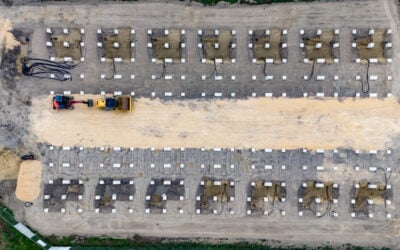Image: Flickr user: Andy Armstrong.
DNV GL’s new recommended practice guidelines for grid-connected energy storage systems is aimed at “reducing risks” for investors and the wider community, the document’s lead author has said.
Martijn Huibers at DNV GL told Energy Storage News that the most important aspect of producing GRIDSTOR was to be as comprehensive as possible in covering the areas of safety, operaton and performance. The biggest problem in the “rapidly expanding” industry, he said, was in fostering common understanding for potential stakeholders, so that they could compare products and services and gain realistic expectations of what storage technology – specifically electricity storage in this case – could do.
“The biggest challenges are at the moment risks and trust in the market. If you are an investor, an end-user, you cannot be sure about the safety of the system. You cannot always be sure about the performance or lifetime of the system,” Huibers said.
“That is because, while there are some standards out there of components, of certain parts of the system or on certain levels, there’s not one comprehensive standard or guideline until now that you can use for a grid-connected energy storage system (ESS).”
Try Premium for just $1
- Full premium access for the first month at only $1
- Converts to an annual rate after 30 days unless cancelled
- Cancel anytime during the trial period
Premium Benefits
- Expert industry analysis and interviews
- Digital access to PV Tech Power journal
- Exclusive event discounts
Or get the full Premium subscription right away
Or continue reading this article for free
While standards are being developed by the International Electrotechnical Commission in its technical committee (IEC TC120) for the system aspects of ESS and their connection to grids, the IEC’s document will not be published until late 2017 or during 2018. In the meantime, while DNV GL’s GRIDSTOR is a set of recommended practices and does not constitute standardisation, Huibers said it was important that the industry put down a marker as quickly as possible to establish a common language. Since the launch of this site, a range of voices, including Fraunhofer Institute for Solar Energy and the UK’s National Solar Centre have frequently discussed the need to get the industry and its potential customers and investors reading from the same page.
The document looks mainly at batteries, with some reference to other technologies including flywheels. A collaborative endeavour for which the consultancy called on a 7-party consortium and 36 industry contributors, the 106-page document looks at definitions, applications such as ancillary services, for transmission and distribution infrastructure and renewables integration, system life cycles, safety and an assessment of the environmental impact of energy storage. DNV GL launched GRIDSTOR in 2014, starting the project in January 2015, while it separately also launched a solar-plus-storage arm of its expert advisory services in summer last year.
DNV GL hopes its document will serve to unify the industry as it awaits the completion of standardisation initiatives. Image: Andreas Heddergott / TUM.
The guidelines also include some reference to the regulatory space, on policies enabling the deployment of storage and the barriers that still exist. However, this section is perhaps the least exhaustive among areas covered.
As Huibers pointed out, there are over 200 countries’ policies on storage the report could have looked at, many of which are either in the process of development or are changing quickly. It does however look at regulation in early-mover markets such as the US, where California’s AB2514 mandate demands the state’s three investor-owned utilities (IoUs) deploy 1.325GW of storage by 2020.
While the world awaits standardisation by IEC and others to be completed, Huibers said the market was moving so quickly that DNV GL felt GRIDSTOR could to some extent plug the gap until then.
“Energy storage is a rapidly developing market,” Huibers said.
“…we see systems are being installed and end-users are interested in systems, investors are looking for investments. As an investor it’s a risk to invest in these systems because you don’t know for example what the lifetime is, it’s not defined in a universal way, it’s not clear how it’s defined, it’s not comparable how it’s defined between different manufacturers because they don’t use a unified way of defining it, there’s no defined way of testing it, and so on. This all leads to a lack of clarity, uncertainty whether to invest in it, but it also leads to technical issues and safety issues.”
DNV GL’s GRIDSTOR document is hosted online as a PDF here and can be downloaded free, here.





